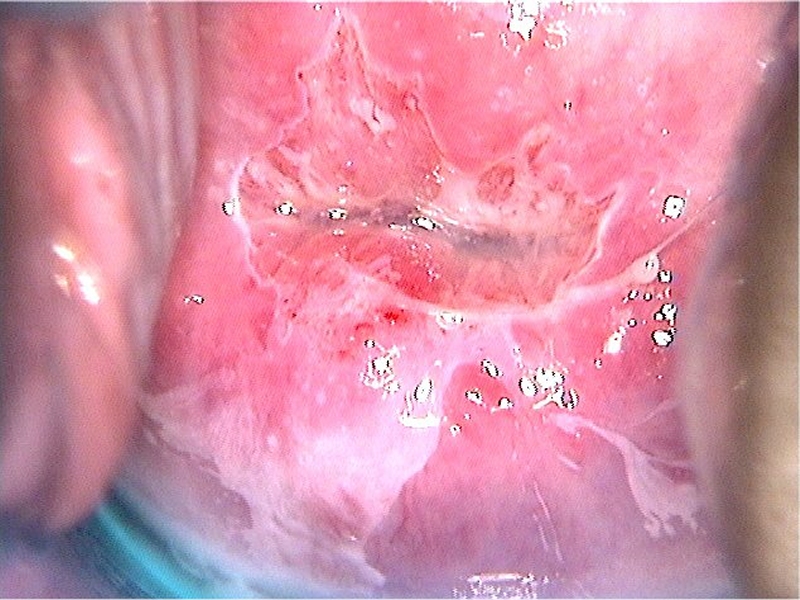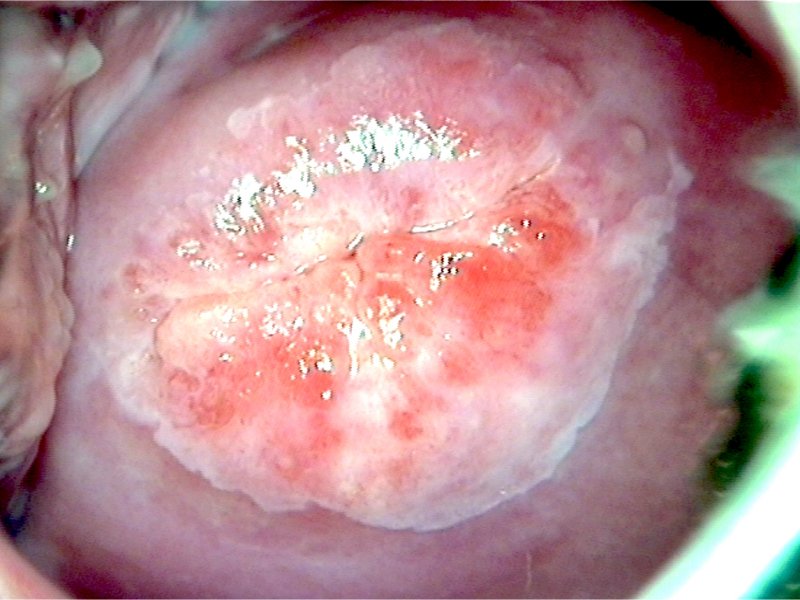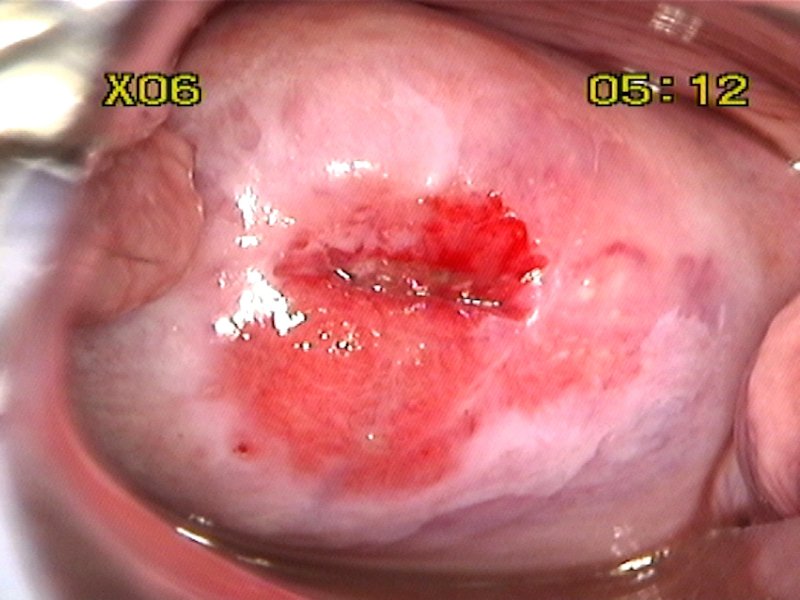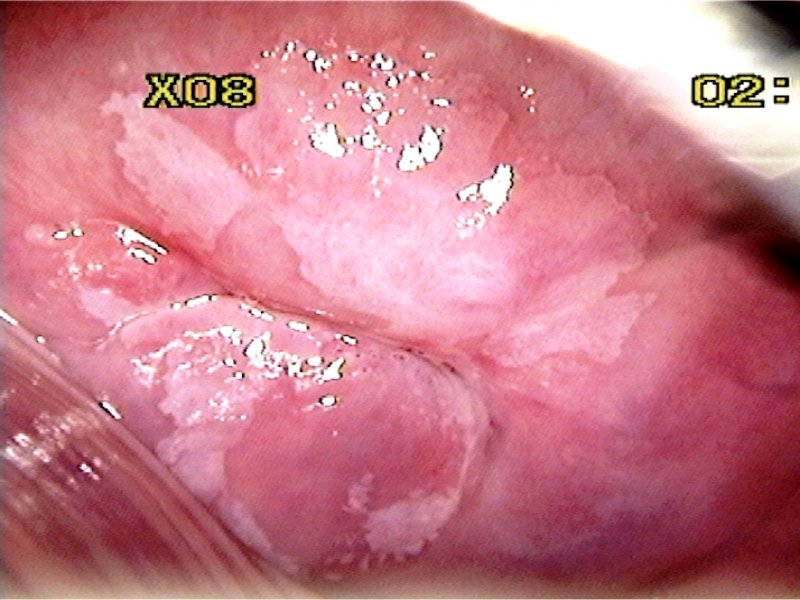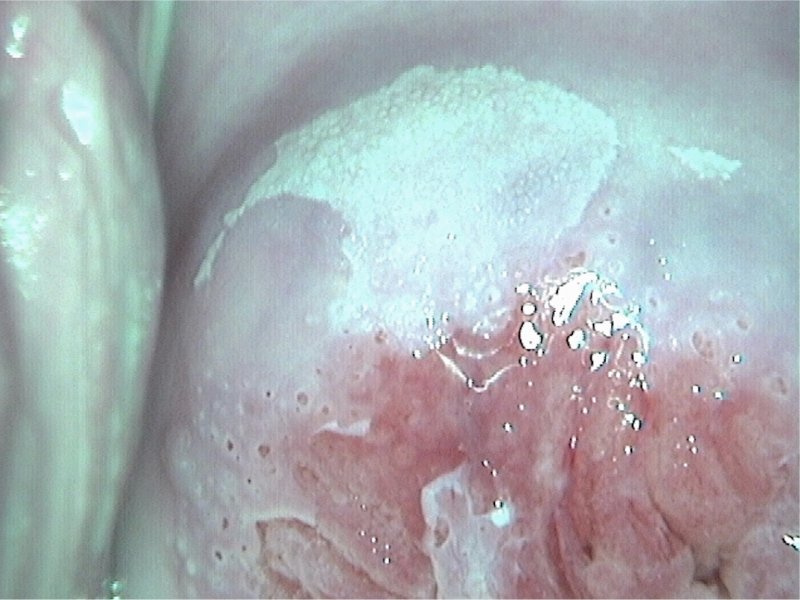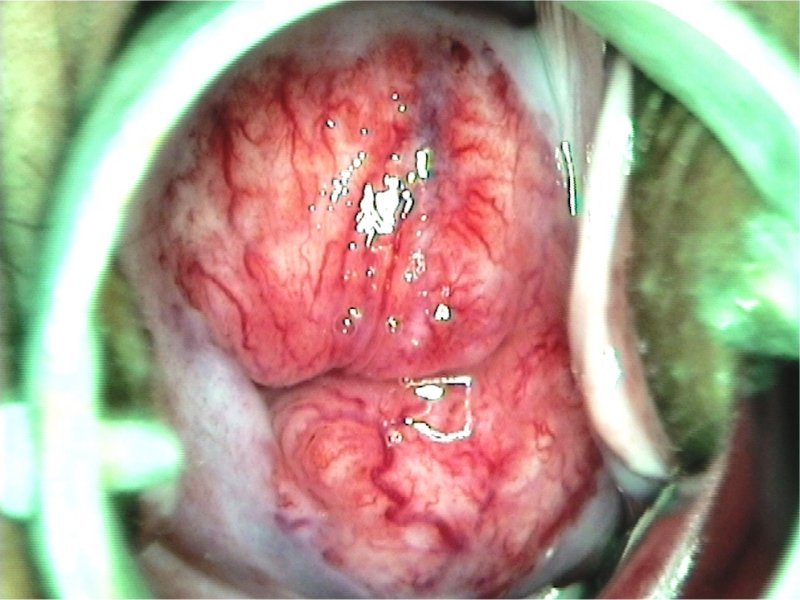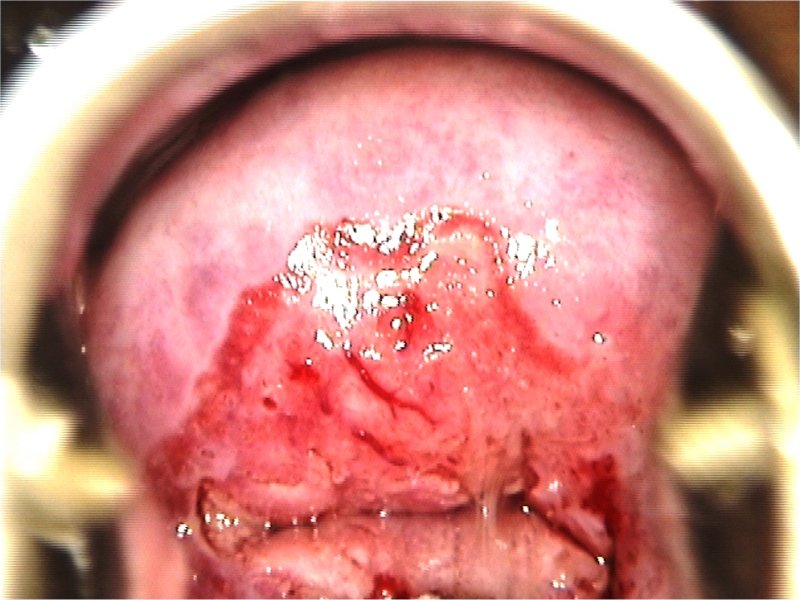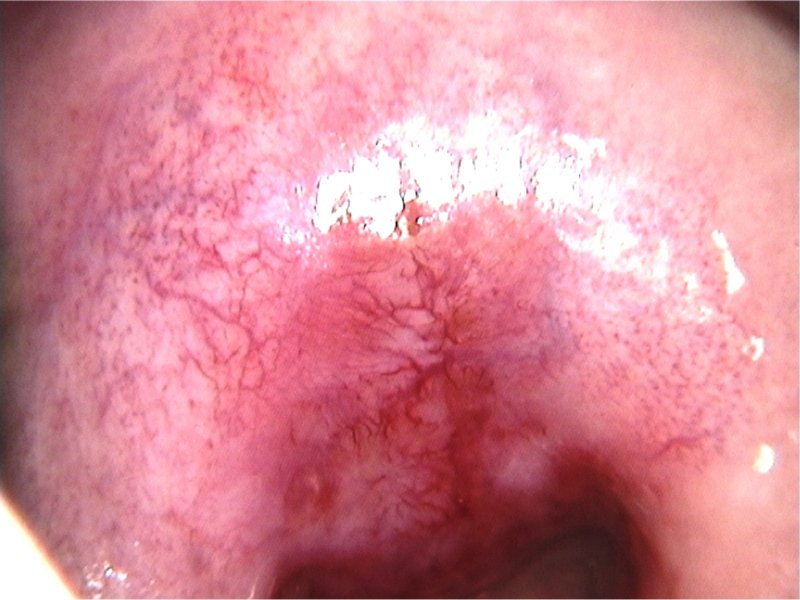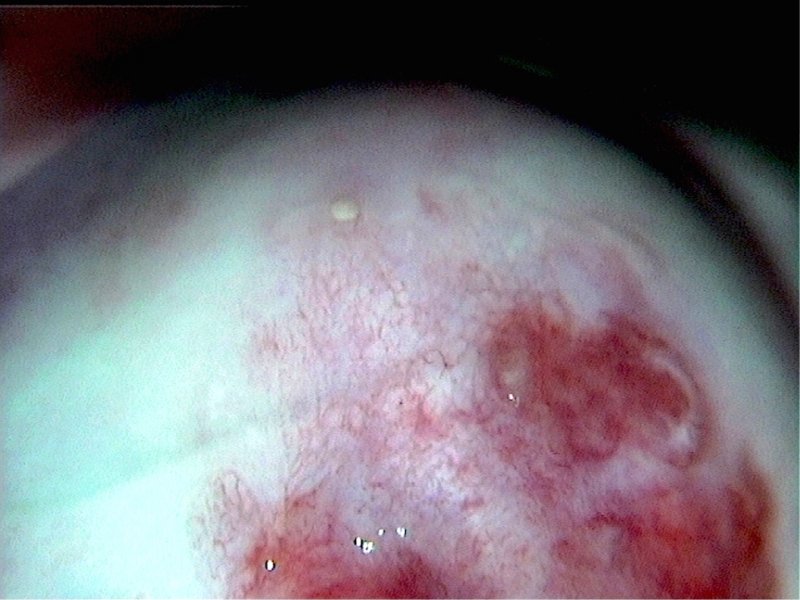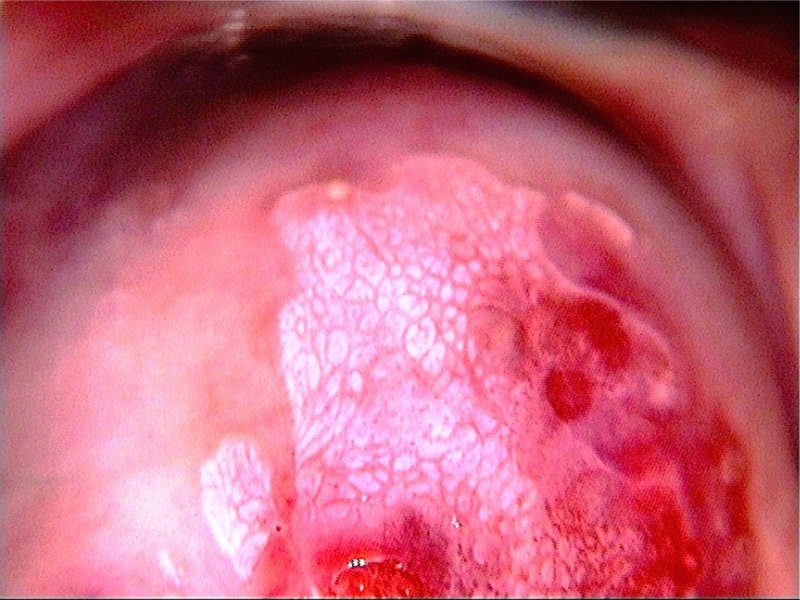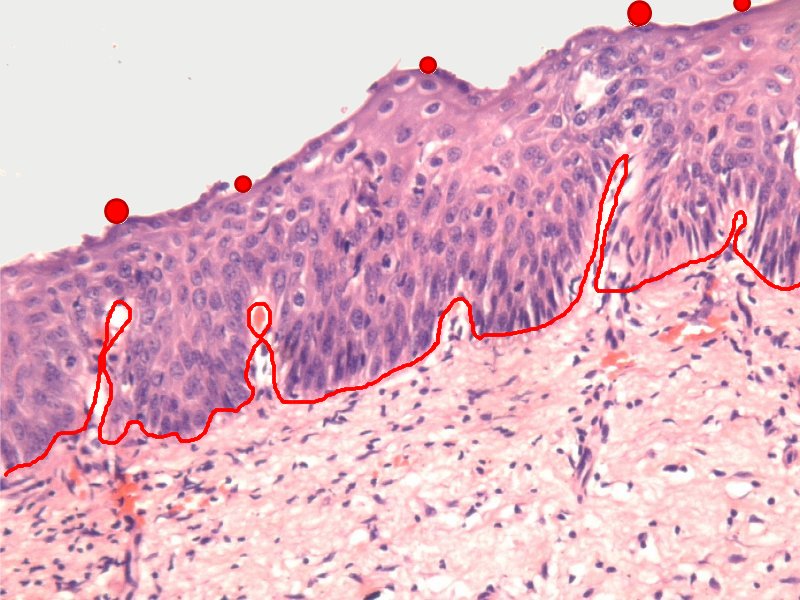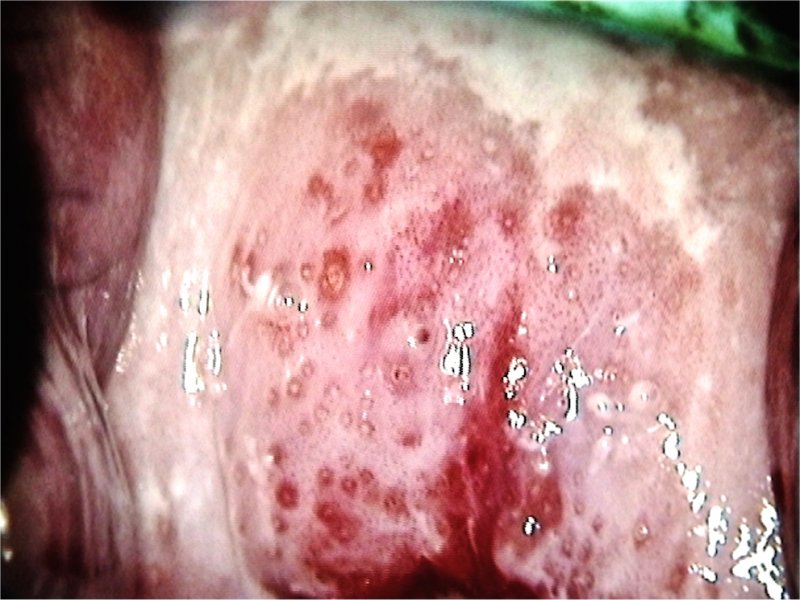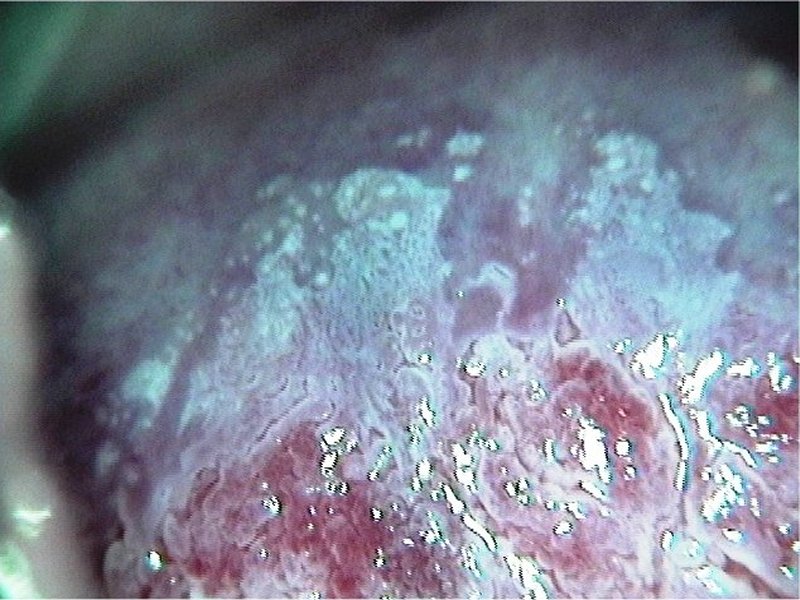|
| Abnormal colposcopic findings – Grade 1 (minor) changes |   |
The colposcopically visible abnormalities on the cervix are categorized into grade 1 (minor) changes, grade 2 (major) changes, or non-specific changes. These gradations take into consideration the acetowhite changes, blood vessel patterns (if any), and the changes after application of Lugol’s iodine. However, acetowhiteness is the most important change to be observed. Grade 1 changes suggest benign conditions or low-grade lesions, whereas grade 2 changes are indicative of high-grade lesions. The non-specific findings are the conditions that may be associated with neoplastic lesions but are also seen in benign conditions.
The grade 1 or minor changes may include any of the following features.
- Thin acetowhite epithelium: The density of the acetowhite area usually increases with the severity of the lesion. The interpretation of the severity of the acetowhiteness is very subjective. A thin acetowhite area that is indistinct or transparent or patchy is most likely due to immature metaplasia or inflammation. A thin but opaque acetowhite area can be due to subclinical papillomavirus infection (SPI) or CIN1, or even metaplasia. Acetowhiteness that is in between transparent and opaque is considered to be “milky” and is usually due to a CIN1 lesion.
- Irregular, geographical border: If the margin of the acetowhite area is indistinct or irregular or angulated (geographical), the lesion is likely to be metaplasia or SPI or CIN1. The more regular the border of the acetowhite area is, the more likely it is that the acetowhite area represents a high-grade lesion.
Normal blood vessels of the cervix have the branching pattern of a tree, with a central stem from which smaller branches spread out. As the branches divide, they become thinner. Sometimes the vessels are like the roots of a tree. In contrast, atypical vessels suddenly appear and disappear, have truncated branches (a “pollarded tree”) or no branches, and have uneven calibres. Prominent but normal vessels are seen over an ectropion, over nabothian follicles, and in an inflamed cervix. A network of capillaries or fine hairpin-like blood vessels may be visible at the periphery of the cervix over the original cervical squamous epithelium. These are normal vessels. However, blood vessel patterns can be most confusing, and the colposcopist should rely more on the acetowhite changes to interpret the findings. Apparently abnormal vessels without any dense acetowhite lesion or erosion in the background have a doubtful value.
|
- Fine mosaic: Sometimes the blood vessels in the stroma are visible as a network of fine capillaries of uniform calibre on the surface. This is known as fine mosaic. Fine mosaic is a common feature of metaplastic epithelium but may also be seen in SPI and CIN1.
- Fine punctation: Sometimes small capillary projections from the stromal capillary network extend towards the surface. Such normal capillary projections appear as tiny, uniformly spaced red dots on colposcopy and are called fine punctations. Fine punctations are commonly seen in an inflamed cervix or immature metaplasia. They are sometimes visible in SPI and CIN1 lesions also.
Note: The blood vessels constrict because of the influence of acetic acid, and the opaque acetowhite epithelium often hides them. As a result, the blood vessels are no longer seen after application of acetic acid. The blood vessels become visible again when the effect of the acetic acid wears off, after a few minutes. The blood vessels should be assessed (with a green filter) once before application of acetic acid and again a few minutes after application of acetic acid, if there is an acetowhite area.
|
25 avenue Tony Garnier CS 90627 69366, LYON CEDEX 07 France - Tel: +33 (0)4 72 73 84 85 © IARC 2025 - Terms of use - Privacy Policy.
| 



